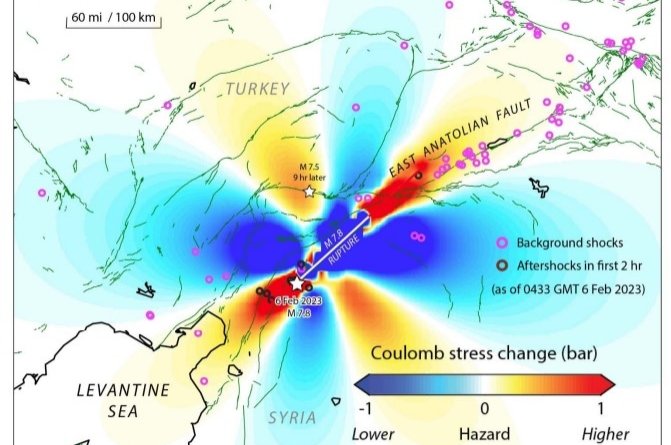
Professor Harold Tobin, professor in the Department of Earth Sciences at Washington University and director of the Northwest Pacific Seismic Network, explained the magnitude and nature of the earthquakes in Kahramanmaraş, which affected 10 provinces.
Stating that his father spent five years of his childhood in Istanbul and Ankara during his doctorate, Tobin said that one of the areas he worked on was the Anatolian Fault Line.
He outlined that Türkiye is one of the most earthquake-prone countries, and these pair of earthquakes in Kahramanmaraş were really big. "These are not only the largest earthquakes we have experienced in recent years in Türkiye but also the largest earthquakes in the world in the last century or more in residential areas," Tobin said.
"Earthquakes were expected in this region, but the magnitude of the earthquake was greater than predicted," he said.
"I don't think such a big earthquake on the Eastern Anatolian Fault Line has ever happened in history. The aftershocks affecting other regions on the fault line, just nine hours later, was highly unprecedented. Connected to a completely different line. This line was also known before, but earthquakes of this magnitude weren't.
"Unfortunately, the combination of these two is a terrible tragedy. The first earthquake caused a lot of damage but the second shake devastated the whole area," explained.
Referring to the information that the Anatolian plate slipped by 3 meters (9.84 feet) after the earthquakes, Tobin said that Anatolia was stuck between two fault lines. "In an earthquake that occurred hundreds of years later, centimetric movements turned into meters."
Tobin explained the scientific facts behind the landslide. "Africa is moving north, Saudi Arabia is pushing the country east, which makes the plates move very slowly. This movement is centimetric every year, but these plates are stuck between fault lines. You know what happens when you try to push a heavy piece of furniture, first it resists, it doesn't move. This creates tension in the earth's crust but then releases all its energy in a minute or so when an earthquake occurs. A few meters of movement occurred along these fault lines. This was the accumulated tension of hundreds of years of plate tectonic movements."
Similar earthquakes had previously been seen in Japan in the 1940s and Indonesia in 2004 and 2005, but there were months between the occurrence of earthquakes "However, two earthquakes of this magnitude in less than 24 hours were almost unprecedented. It's been a very, very long time, and I guess we haven't seen anything like this since the invention of seismological instruments," he said.
